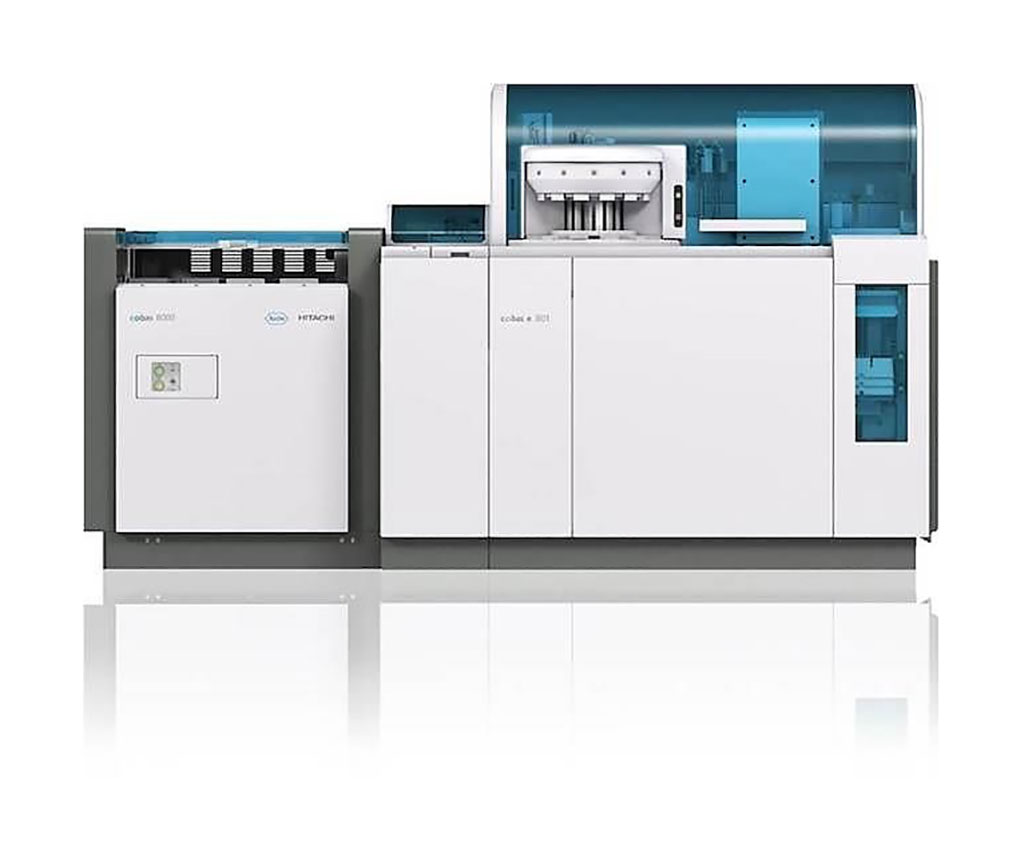Methods for Intra-Erythrocyte Magnesium and Its Determinants Compared
By LabMedica International staff writers
Posted on 15 Oct 2020
Magnesium is the second most abundant intracellular cation and is essential for regulation of many functions within the cell, including modulation of ion channels, protein synthesis and energy metabolism. Posted on 15 Oct 2020
Several laboratory tests to assess cellular magnesium concentrations in the human body have been evaluated, of which measurements in leukocytes generally correlate well with other magnesium pools, including skeleton, vascular smooth muscle and cardiac muscle.

Image Some of the components of the cobas 8000 modular analyzer series (Photo courtesy of Roche).
Medical scientists at the University Medical Center Groningen (Groningen, the Netherlands) and their associates analyzed both urine and blood from 1,699 participants in a cohort study. The overall, mean age of the cohort was 51.0 ± 13.4 years, 57.5% were female, 36.0% were non-smoker and 11.9% non-drinker.
Plasma glucose was measured routinely on a Cobas 8000 platform (Roche, Mannheim, Germany) using a hexokinase UV test. Total cholesterol was measured using an enzymatic colorimetric assay, high-density lipoprotein cholesterol using a homogeneous enzymatic colorimetric assay, low-density lipoprotein cholesterol using a direct measurement, homogeneous enzymatic colorimetric assay, and triglycerides using a enzymatic colorimetric assay, not glycerol blanked, all measured routinely on a Cobas 8000.
The plasma magnesium concentration was also assessed using a colorimetric assay on a Cobas 8000. The colorimetric assay is based on the complex formation between magnesium ions and xylidyl blue in an alkaline solution (tris(hydroxymethyl)-aminomethane/6-aminocaproic acid buffer), forming a purple diazonium salt. EDTA whole blood samples were collected between August 2017 until December 2017. One aliquot sample was prepared for indirect intra-erythrocyte magnesium (iIEM) and one for direct intra-erythrocyte magnesium (dIEM). A validated inductively coupled plasma mass spectrometry (ICP-MS) method was used to determine magnesium in whole blood (for iIEM) and washed erythrocytes (for dIEM).
The investigators reported that the mean dIEM and iIEM were 0.20 ± 0.04 mmol/1012 cells and 0.25 ± 0.04 mmol/1012 cells, respectively. The mean plasma magnesium was 0.85 ± 0.06 mmol/L and mean urinary magnesium excretion was 4.85 ± 1.76 mmol/24-h. They found a strong correlation between dIEM and iIEM. Passing-Bablok regression analyses showed an intercept of 0.015 (95% CI: 0.005; 0.023) and a slope of 1.157 (95% CI: 1.109; 1.210). In linear regression analyses, plasma levels of total- and LDL -cholesterol, and triglycerides were positively associated dIEM, iIEM, and plasma magnesium, while glucose and HbA1c were inversely associated with plasma magnesium.
The authors concluded that there was a strong correlation between a direct and an indirect method for the assessment of IEM. The study indicated that iIEM can be used in practice, eliminating labor-intensive washing procedures and high costs required for direct methods. The study was published on September 11, 2020 in the journal Clinica Chimica Acta.












.jpg)
